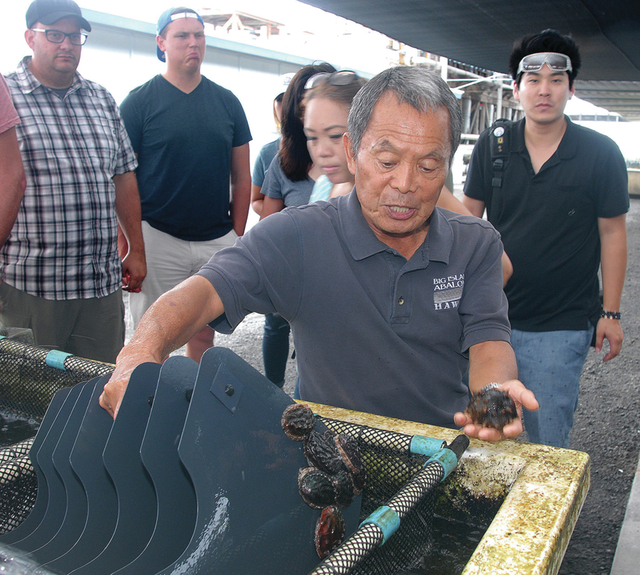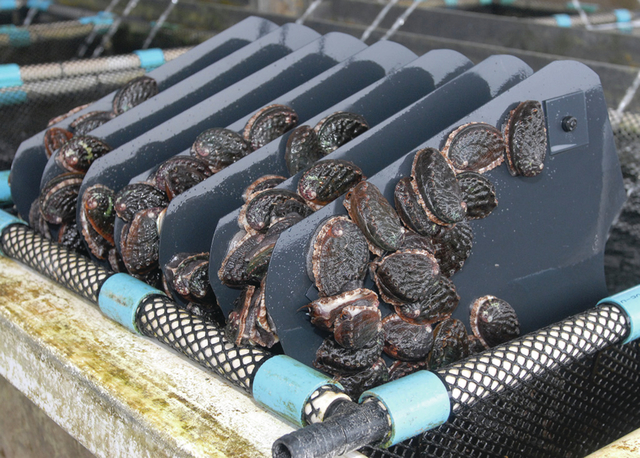KAILUA-KONA — The Big Island Abalone Corp. announced Thursday it is seeking a new investor for its farm at the Natural Energy Laboratory of Hawaii Authority.
If no new investor steps forward in the next two or three months, BIAC will begin winding down operations at NELHA — a process expected to span between 12 and 18 months. Even in that scenario, the farm would still produce and sell abalone in the United States and abroad until operations ceased for good.
Hiroshi Arai, president of BIAC since 2007, said he’s hopeful someone will step forward to keep the work happening at NELHA alive.
“It has been a great project, and I really enjoy what we have been doing,” Arai said. “We are very proud. We have a good product made in Hawaii.”
According to a release from BIAC, its principal shareholder plans to divest from the operation to “focus on its core business.”
The release did not contain the name of BIAC’s principal shareholder, but NELHA Executive Director Greg Barbour said the company is owned by Trident Seafoods, which he described as one of the largest seafood companies in the United States.
According to Trident’s website, it owns 11 shoreside processing facilities and six value-adding processing facilities located in several states across the country including Alaska, Washington, Minnesota and Georgia. Its corporate offices are located in Seattle.
Abalone is a sea snail viewed as a delicacy in several countries, particularly in Asia. The abalone aquafarm at NELHA is one of the largest such aquafarms in the world, operating on a 10-acre plot of land on the West Hawaii coast.
BIAC produces Ezo stock abalone using cold, nutrient-packed seawater pumped from a depth of 3,000 feet, courtesy of NELHA’s 55-inch pipe capable of transporting 27,000 gallons to the worksite every minute. On its website, BIAC describes its process, combined with the ocean conditions and abundant sunlight in Kona, as jointly creating a “near-perfect” environment for growing its Ezo.
Frank Olinares, office manager at BIAC, said the company currently employs 34 people.
Barbour said even if the abalone farm shuts its doors, he expects many of its workers only to experience a temporary employment disruption, as their experience has rendered them “highly skilled and very employable.”
He added he didn’t expect any trouble filling the vacancy a BIAC departure would create, as the land parcel on which it operates is one of NELHA’s most valuable.
“We’ve tried really hard to help BIAC over 15 years, but for whatever reason, their business model hasn’t worked out,” he said.
“But I think we could quickly find someone to use the property.”
Barbour said he’s already received inquiries about the property from interested parties, several of whom already conduct operations at NELHA, should BIAC fail to find a new investor in the next few months.
If BIAC were to leave, it would have to file paperwork with Barbour’s office indicating its intention to terminate its lease on the land.
He said, as of yet, NELHA has received no such paperwork from BIAC.
Email Max Dible at mdible@westhawaiitoday.com.









